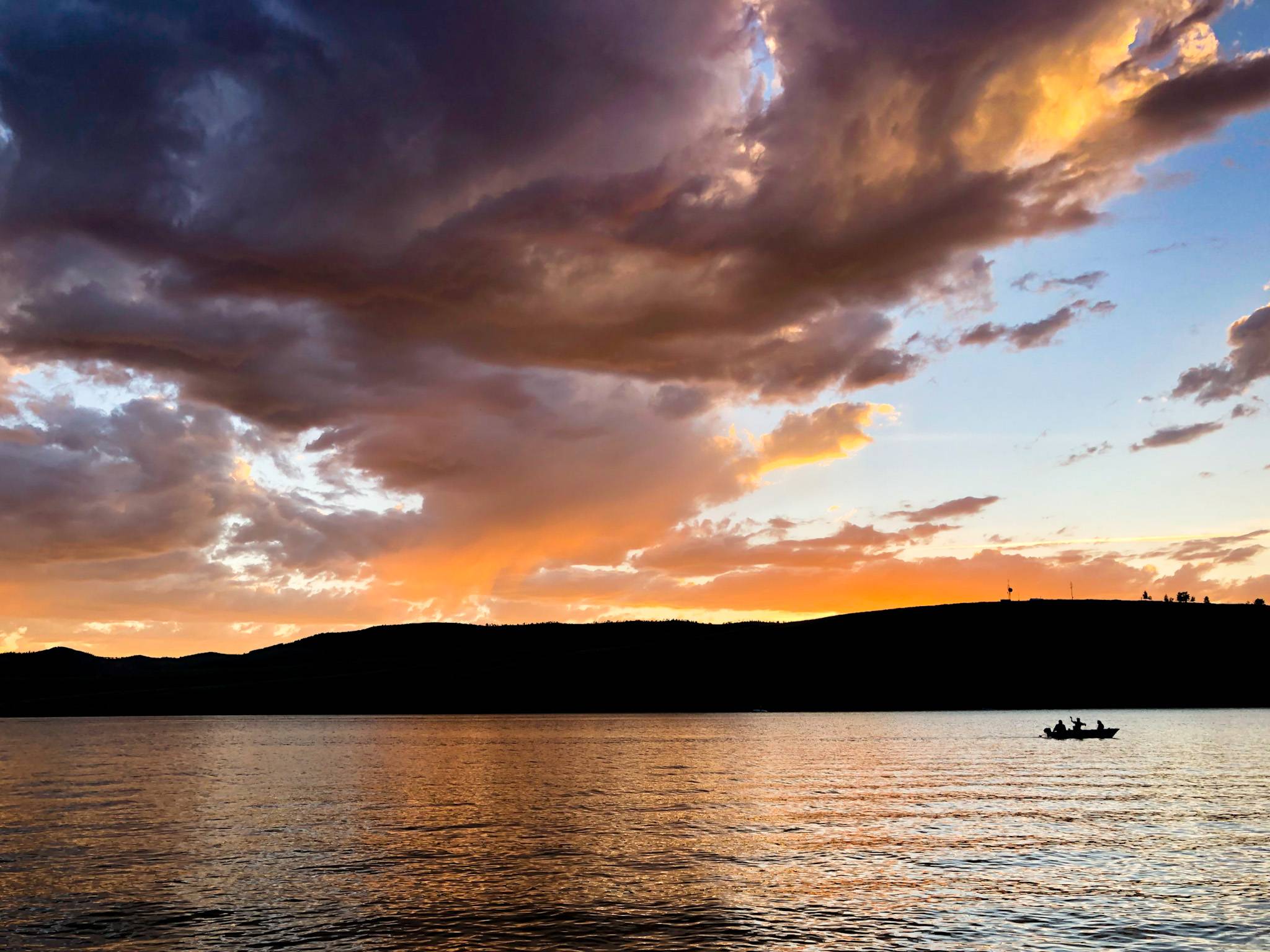DWR News Release
SALT LAKE CITY — Blue Ribbon Fisheries are waterbodies that provide some of Utah’s most exceptional, high-quality fishing experiences, and Scofield Reservoir was recently reclassified with this elite designation.
Located in Carbon County, Scofield Reservoir was previously designated as a Blue Ribbon Fishery. However, due to an increase in Utah chubs — which were illegally introduced into the reservoir in 2005 — the fishery was negatively impacted, resulting in the loss of its Blue Ribbon status in 2017. The Utah Division of Wildlife Resources updated the management plan for the reservoir in order to address the overabundance of Utah chubs and began stocking tiger muskies, wipers and cutthroat trout. These sportfish species feed on other fish and have since helped reduce and control the Utah chub numbers, as well as provide additional, high-quality fishing opportunities.
Last month, the Blue Ribbon Fisheries Advisory Council — a representative committee of 13 anglers appointed by the governor — voted to restore Scofield Reservoir’s Blue Ribbon status.
“Scofield State Park sees tens of thousands of visitors each year, many of whom are anglers looking for their next big catch,” Scofield State Park Manager Brad Walker said. “With so many beautiful waterbodies to choose from in Utah, we’re thankful for the visitors who continue to visit Scofield Reservoir. We hope this designation can help spread awareness of how special this place truly is.”
There are currently 42 waterbodies in addition to two mountain areas in Utah — streams, rivers and lakes on the Uinta mountains and on Boulder Mountain — that hold this Blue Ribbon status. The Blue Ribbon Fisheries program was created in 2001 by then-Gov. Mike Leavitt, and was formally established in 2005 through an executive order by then-Gov. Jon Huntsman.
“The program was created because Utah’s leaders recognized that fishing is one of the state’s most popular and economically valuable recreational activities,” Utah Division of Wildlife Resources Sportfish Coordinator Trina Hedrick said. “There was a need to recognize the best angling opportunities in the state and to provide additional funding for further improvements to keep them at that level. This program helps fulfill those needs.”
In order to be named a Blue Ribbon Fishery, a waterbody has to meet several requirements and provide highly satisfying fishing and recreational experiences for diverse groups of anglers and outdoor enthusiasts. Waterbodies are selected and reviewed by the Blue Ribbon Fisheries Advisory Council annually.
A recent economic study of Utah’s Blue Ribbon Fisheries showed that:
-
In 2023, 418,000 licensed anglers in Utah fished an average of 14 times per year, contributing an estimated $1 billion in expenditures, much of which goes to local economies.
-
Fishing contributes $426 million in fiscal revenue per year.
-
Fishing-related businesses employ over 17,800 people in Utah.
“These waters are among the best fishing spots in Utah. They have been proven to provide not only great fishing, but also ideal habitat for the fish, economic benefits to the local communities, and an overall high-quality experience in the outdoors,” Hedrick said. “They offer high fishing success rates (either through high catch rates or bigger fish) and oftentimes have great amenities like boat ramps and fishing piers.”
High-quality fishing waterbodies are only one important part of the Blue Ribbon Fisheries program, however. The program also allocates funds for improvements to help maintain that quality experience and to allow other waterbodies to reach Blue Ribbon status once they are selected for the Blue Ribbon “potential” list. Earlier this year, a total of $440,000 was allocated to 11 projects selected by the Blue Ribbon Fisheries Advisory Council that will be implemented during the 2024-25 fiscal year.
“We really appreciate all the members who serve on the Blue Ribbon Council,” Hedrick said. “These individuals often serve three to six years, taking time from their busy lives to improve fishing in Utah. We can’t thank them enough for their service.”

